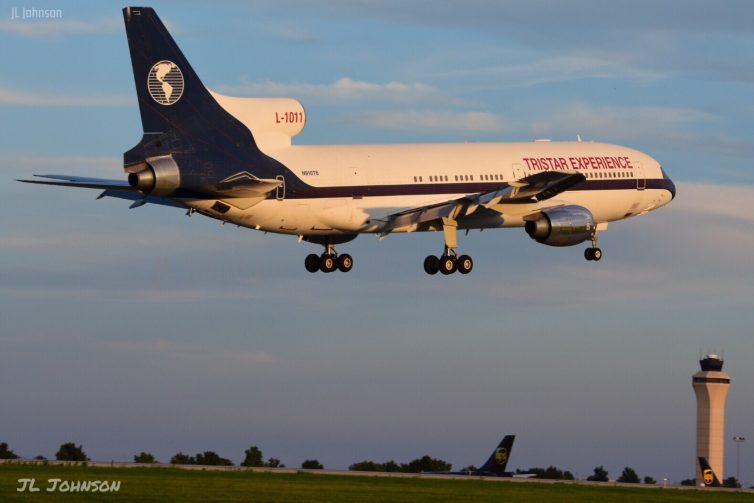
Lockheed L-1011 TriStar does a fly-by of Kansas City International Airport. – Photo: JL Johnson. Not for use elsewhere.
The Lockheed L-1011 TriStar was a plane with a tragically short lifespan. It was expected to be a real contender against the Boeing 747, Douglas DC-10, and Airbus A300. It entered the market late, in large part due to delays resulting from difficulty at Rolls-Royce, the only engine producer for the TriStar. Despite this, it is one of just a few airliners that elicits strong emotion from people of all ages and walks of life. It was received with much fanfare.
In business, however, fanfare does not necessarily equate to economic viability. In roughly two decades, just 250 units were produced – including an incredible number of custom variants. Few operators held onto their L-1011s for long before passing them along to others or sending them to storage. By most accounts, the TriStar was a failure. During development of the only TriStar engine option, the RB211, Rolls-Royce was deemed what modern day observers would call “too big to fail.” It was nationalized to avoid catastrophic economic impact to the United Kingdom and to keep the costly program afloat. Following the cancellation of the series, Lockheed fully withdrew from the commercial airliner market to focus on military and other industries.
But struggles in development, lackluster sales, and frequent turnover did not get in the way of the passion shared by those who had in some way experienced the TriStar. It was and is one of the most beloved planes in AvGeek culture. The TriStar was an underdog. People love an underdog story, and that is just what this is.